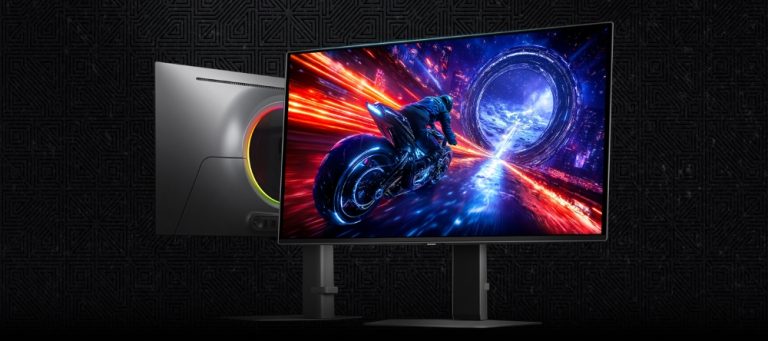
Introduction
Welcome to the realm of Pin Grid Array processor, a vital part of modern electronic packaging. PGA processor is consider to be the heart of any computer, think of a tiny heart processing a mighty computer with all of its multiple tasking and pin point. It is perfect in everything.
PGA a tiny field where hundreds of metallic pins stand tall, coordinating the symphony of data flow with accuracy and speed. Before we explore we must know the difference between PGA (Pin Grid Array) and LGA (Land Grid Array)
Understanding PGA
Pin Grid Array (PGA) is a type of surface-mount packaging primarily used for integrated circuits, especially in micro processors. In a Pin Grid Array, the under side of the package has an array of pins that are meant to insert into a socket containing a matching array of holes.
This setup allows for strong physical and electrical connections. PGA is often famous for its long run and ease of replacement, but it’s pins can be fragile and prone to bend or damage during handling. PGA is commonly use in older or less performance intensive applications.
Table of contents
Capacity of Pin Grid Array processor
A high density of pins, often ranging from hundreds to over a thousand, is support by PGA packages. Because of the large pin count, there are more connections between the motherboard and the micro processor, supports more complicated functions and enables faster data transfer speeds.
Intel PGA: To support its high end CPUs, such the Intel Core i9 series, Intel’s PGA packages, for instance, can have up to 1,200 pins.
AMD PGA: AMD’s well liked PGA AM4 socket can accommodate up to 1,331 pins, giving their Ryzen processors strong support.
The capacity of Pin Grid Array is far better than the previous one because of the large pin count for more and more connections.
Performance of Pin Grid Array processor
Better performance is directly correlate with a higher pin count. Improved power distribution and signal integrity both important for multi tasking and high speed computing come from having more pins.
The Pin Grid Array uses microprocessors and microcontrollers which helps in easy installation and connection reliability. The higher pin count improves connectivity and signal integrity results in fast processing.
- Data Transfer Rates: PGA packages support higher data transfer rates, crucial for modern applications that require quick data processing and real time computations.
- Heat Dissipation: The design also aids in better heat dissipation, maintaining optimal operating temperatures and make sure stable performance under heavy loads.
Higher data transfer rates are supported by PGA packages which makes it the best one.
Market Value
The market value of PGA packages is influence by their wide spread use in high performance applications of computer.
The stagger pin grid array (SPGA) is used by Intel processors based on Socket 5 and Socket 7. Socket 8 used a partial SPGA layout on half the processor.
The ability to support powerful CPUs makes them indispensable in gaming, data centers, and professional workstations.
- Gaming: Enthusiast gamers often opt for PGA-equipped CPUs due to their superior performance and over clocking capabilities.
- Data Centers: For data centers, where performance and reliability are paramount, PGA packages are a preferred choice due to their robustness and efficiency.
According to market research, the global microprocessor and GPU market expects to grow from USD 87.22 billion in 2021 to USD 132.51 billion by 2026, with PGA playing a significant role in this expansion due to its superior performance features.
Related Links you may find interesting
Advantages of PGA
PGA processors have various benefits. Consider below for the advantages of PGA processors:-
Durability of PGA
The physical structure of a PGA processor has a great impact on its durability.
- Strong pin design
The pins are located on PGA processors are normally made of metal. The metals are durable like copper or an alloy. Normally they are cover with gold to stop corrosion. This makes sure that pins stand firm after several insertion and removal with breaking. - Safe socket connection
The design of the grid and gaps between pins are designed to offer stable connection with the motherboard socket. This reduces the chance of connection issues due to physical motion. - Thermal Resilience
PGA processors are built to bear heat generated while operating. The plastic base of the packages can stand firm in high temperatures. It protects the inner parts from thermal damage.
Mechanical stability
When it comes to Mechanical Stability PGA is the best. PGA packages are well known for their mechanical stability. The pins provide a secure connection to the socket, reducing the likelihood of dislodgement or damage.
High I/O Count
PGA processor is suitable for components with a high number of input/output connections. High I/O count increases the number of connections between processor and motherboard. Each pin of the array serves a specific function. More pins means more pathways for data to travel.
Disadvantages
Whereas PGA offers several benefits, it has some disadvantages. They are as follows:-
Fragility of pins
Several pins of the PGA processor can easily bend or damage while installing. This cause an issue in connection or give the processor unusable
Repair Difficulty
PGA processors are difficult to repair. If the pins get damage during the process it is very difficult to replace old pins with new ones. It often requires specialize equipment.
Difficult in installation
Lining the pins with holes of socket can be difficult. Wrong alignment can bend or damage the socket or pins.
The socket wear and tear
The frequent insertion and removal of processors can result in socket wear or tear. It may lead to poor contact or damage the motherboard.
Applications of PGA
It is commonly use for processors, high density memory modules, and other high performance parts where mechanical strength and high pin count are important.
Conclusion
The evolution of computing technologies continually pushes the boundaries of what is possible. Pin Grid Array processor plays an important role in this progression
PGA’s importance in the technology scene is ensure by its ability to supply dependable, fast, and efficient processing solutions. Whether for professional workstations, data centers, or game fans, PGA is a vital part of the continuous advancement of micro processor technology.
Complex and powerful processing units to be securely and efficiently integrated into computing systems. By enabling this PGA processor can help fuel change in various fields, from personal computing to large scale data centers and beyond.
FAQs:-
- How does the core affect the CPU performance?
Each core of CPU is capable of taking, decoding and executing its own instructions. The more core a CPU has the greater number of instructions it can process in a given space of time. - How does CPU usage affect performance?
High CPU usage can cause the computer to become slow, unresponsive and crash. - What is the performance of the CPU affected by?
Performance of CPU is affected by number of cores, clock speed and memory. There are different types of volatile and non-volatile memory.





